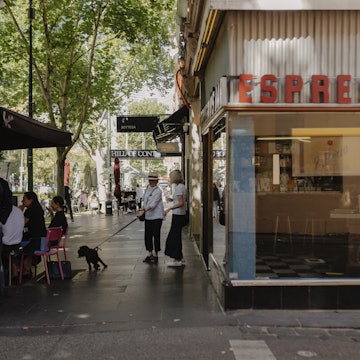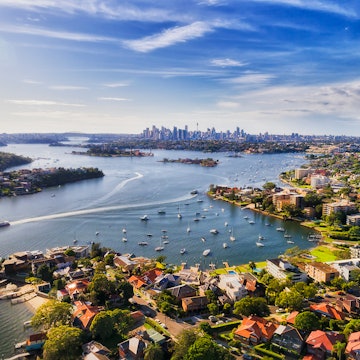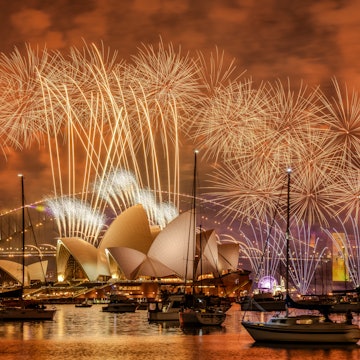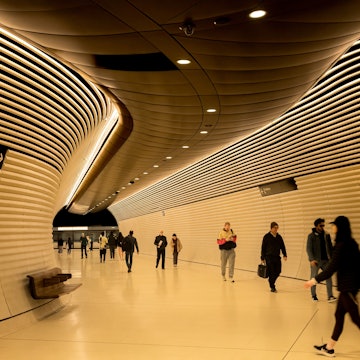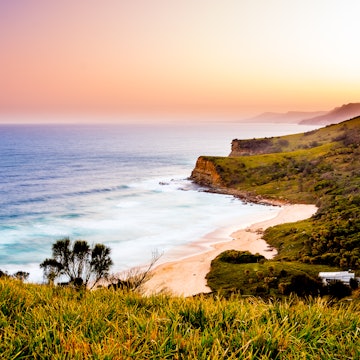

I’d seen pictures, even watched videos, but nothing really prepared me for my first sight of the tall ship SV Tenacious.
At 64m long, 10.5m wide and 37.5m from the deck to the tip of the main masthead, it is the largest single-hulled wooden ship still sailing the world’s oceans. As though transported straight out of the 19th century – or from the set of Pirates of the Caribbean – with its hull of Siberian larch and teak decking, this three-masted, 586-tonne barque is truly a thing of beauty.

Taking a voyage on a tall ship such as this is an opportunity of a lifetime for anyone, but for someone living with a disability it could simply be seen as the stuff of dreams. As luck would have it, Tenacious was for me a dream come true. And although one of a select few, I’m not alone. Tenacious and its sister ship Lord Nelson, both operated by the UK-based Jubilee Sailing Trust (JST), are the only tall ships in the world designed to accommodate crews of mixed abilities. Since Lord Nelson was commissioned 38 years ago, more than 55,000 people have sailed on these two ships, almost half of whom are living with a disability.
Tenacious was built in the late 1990s by a multinational team of 1500 volunteers, about half of whom were living with some form of disability, at a cost of some £14.5 million. It is equipped with six wheelchair lifts between the decks and fixing points throughout for use in rough weather for wheelchair users; deck ribs, Braille signage and a speaking compass for the vision impaired; and vibrating alarm pads under the bunks and an induction loop for the hearing impaired. She can be helmed with the traditional wheel or, for those with limited mobility, a joystick or power-assisted steering.

I joined Tenacious’ voyage from Sydney to Melbourne, its 500th since being commissioned in 2000 and one of its last outings in its 18-month sojourn in the Antipodes. There are no passengers on JST voyages, only crew – made up of nine permanent crew members and 30 to 40 voyage crew – and everyone is expected to fulfil their duties to the best of their ability, whatever that ability is. It’s a mark of how normalised being a disabled crew member is that it’s hard for me to assess accurately how many of the voyage crew were disabled – many disabilities are invisible, after all – but I can say that there were four wheelchair users, one person with cerebral palsy, one vision-impaired person and one person with learning difficulties.
If we were under any illusions involving deck chairs and cocktails, they were dispelled by our first briefing: this wasn’t going to be a relaxed cruise – ‘happy hour’ is the name given to the time each day during which the voyage crew scrubs the decks and sluices the heads (including five wheelchair-accessible bathrooms) among other maintenance tasks.

Since I was physically incapable of performing some tasks I was once assigned the task of polishing the ship’s brass bell! Each of the four watches was assigned six hours of watch duty staggered progressively over each 24-hour period, which meant that it was impossible to get into any sleeping rhythm. Despite this, or perhaps because of it, the experience of sailing on a JST ship is clearly attractive enough to lure people back not once but often: at least a fifth of the voyage crew had been on more than one voyage and a few had sailed numerous times.
We’re all familiar with the safety briefings we receive upon boarding an aeroplane, so much so that most of us simply tune out. In the event of an accident, the chances of survival are slim anyway, particularly for disabled passengers. The safety briefing we received on day one couldn’t have been more different: it was clear that life or death hinged on people following protocol and that people with a disability would not be left behind. Once the briefing was over, we had evacuation drills, where all wheelies were sent below decks so the process of hauling them in their chairs up the stairs could be perfected. And that really meant perfected: the drill would be repeated until everybody was ready to be evacuated, complete with life jacket, in less than six minutes. In our case, that meant we only had to do it twice.

Despite the practicalities of briefings and stowing luggage, the excitement among the voyage crew was palpable – we couldn’t wait to depart our berth in Port Jackson, Sydney’s stunningly beautiful natural harbour and the location of the first European settlement in Australia. With the captain keen to make it out to the Tasman Sea before nightfall, it wasn’t long before we were motoring towards Sydney Harbour Bridge. As we neared the bridge, I peered up nervously – it really didn’t look as though we would make it underneath. We did and with a full 5m gap to spare (I subsequently checked the figures).
As we passed under the bridge, I got my first view of the Sydney Opera House as it appears from the water, the best vantage point from which to appreciate its beauty. It was odd, though, to realise that at that moment the ship we were sailing on was drawing more attention than one of the most iconic buildings in the world. Even without the sails hoisted, the jet black hull and pure white masts against a perfect blue sky must have been a splendid sight.
My first watch was midnight to 4am. My carer and I – every disabled crew member is required to have a ‘buddy’ – left our bunks after a short rest (too excited to sleep) and drew the curtains to the eerie light of the gangway: red to preserve night vision. Unfolding my motorised travel wheelchair, I was dismayed to discover that it wouldn’t turn on, but thinking it must just be a loose wire and not wanting to be late for our very first watch, we borrowed one of the ship’s manual wheelchairs to make our way to the bridge via two lifts.
As we motored south at about 8 knots, we took up rotating positions at port and starboard watch and at the helm. You might imagine four hours staring into the blackness would be boring but being a lifelong city dweller, it’s always a wondrous thing to leave light pollution behind and behold a sky studded with millions of stars. I was particularly blessed that night as I sat on the starboard watch when a bright ball of fire – a meteorite – streaked through the sky barely a kilometre away. It was also exhilarating taking the helm for the first time, being responsible for keeping this enormous ship on course using the big, backlit ship’s compass and the wood and brass ship’s wheel that was as tall as me as I sat in my chair.

Day two also offered up another first for me: a glimpse of a whale as its fluke disappeared a couple of hundred metres off to port. But this was nothing compared to the marvel of seeing a pod of dolphins bow riding the following day. This fascinating behaviour, when dolphins position themselves in such a way as to be lifted up and pushed forward by the circulating water generated by the bow pressure wave of a moving vessel, was first recorded by the ancient Greeks. There are even tales of dolphins taunting larger whales to chase them so they can bow ride (or wake ride) them. There’s no discernible reason why they should do this other than for pure entertainment, and it certainly was joyous to watch.
So far, the weather had been fine, with temperatures above average for this time of year, and we were treated to some beautiful sunsets. The winds remained favourable as we made the southwest turn into Bass Strait, racing along at 9 to 10 knots, still under sail. This did mean, however, a high swell, and I was still having to use the ship’s manual wheelchair: my power wheelchair still wouldn’t start, despite the best efforts of even the ship’s engineer, so I would have to do without it for the rest of the trip.

On my next watch, I was lucky enough to be at the helm when the captain, a gruff Scot who clearly didn’t suffer fools gladly, was on the bridge. The ship’s engineer, who happened to be nearby, luckily tipped me off on the protocol: repeat back any direction given by the captain to show that you have understood correctly. “Port 10°”, said Simon, the captain. “Port 10°”, I repeated as I swung the ship’s wheel anticlockwise. “Another 5° port”. “5° port”. “Set a course at 235°”. “Course: 235°”. Apart from the extra frisson of excitement of having the captain on the bridge taking direct command of the ship, it felt like I was on the deck of the USS Enterprise. Indeed, while on the voyage, I realised that most of the ship’s terminology I know comes not from any knowledge of sailing but from watching episodes of Star Trek.
On day four we rounded Wilsons Promontory, a major goal in a case of worsening weather or no wind. Indeed the wind did drop significantly and we were reduced to a speed of 2 to 3 knots. Now that the pitch and roll of the ship were not too severe, I was able to regain some independence by walking around the ship with the assistance of a four-wheeled frame, albeit slowly and unsteadily.
Wilsons Promontory is possibly my favourite spot in Australia and we anchored in the beautiful Oberon Bay, from where I was able to view the Prom from the water for the first time. That night we took our first anchor watch. There wasn’t the stress of worrying about colliding with another ship, but we still had to take readings every 15 minutes to make sure we hadn’t slipped anchor, to keep a watch on the weather and to make sure we were not boarded by uninvited visitors – more of a problem in the Arabian or Sulu Seas than in Australia’s Bass Strait, where wild weather is the greatest danger.

With calm waters, and the shelter of the bay, this was deemed to be the ideal time for what is known on board as ‘wheelies aloft!’, when wheelchair users are given the opportunity to be hoisted to the crow’s nest – not the highest one, but certainly high enough for a thrill, and I couldn’t stop grinning either on the ride up or from my vantage point 10m above the deck. We were all in awe of our fellow crew member with cerebral palsy, a wheelchair user who decided on an assisted climb to the crow’s nest. He was harnessed and accompanied, but it clearly took an enormous physical and mental effort to climb the near-vertical rope ladder.
We were now nearing the end of our voyage and we approached our anchorage outside Port Phillip Bay under motor since there was no wind. As we experienced our first major rainfall, the swell became too high for me to walk safely and I was back in the ship’s wheelchair. Luckily, the rain didn’t last long and we anchored for the final time at the entrance to the bay. In the morning, we were given a choice of excursion – to the historic quarantine station in Portsea or to a small seal colony on a gazebo nicknamed the Chinaman’s Hat. I chose the latter, and was duly hoisted down into one of the lifeboats. The gazebo was literally overflowing with seals. The three people who decided to go for a closer swim had to brave not only the cold water, but also the stench of rotting fish, which was overpowering even from a distance of 50m.

We raised sail to enter the bay and finish our voyage on the high of being under sail one last time. But the sails were lowered again for our final approach on a baking summer’s day to our dock in Williamstown behind Sea Shepherd’s celebrated Steve Irwin, erstwhile scourge of Japanese whalers, at its home berth. In total, we had covered 635 nautical miles, a remarkable 65% of which had been under sail thanks to favourable winds.
Experiencing a voyage on Tenacious (or her sister ship Lord Nelson) is an object lesson in the benefits of inclusion and accessibility. People living with a disability can challenge themselves, experience adventure and explore what they are capable of given the opportunity, while able-bodied crew members are shown that disability doesn’t necessarily mean incapacity. People living with disability are given the opportunity to broaden the horizons of what they might consider possible, while the able-bodied – who may never have interacted with someone with a disability – are given the opportunity to see the person and not merely their disability.
Although it will be a long wait – the Lord Nelson is due to visit Australia in a couple of years – I wouldn’t hesitate to sign up for another voyage and I would encourage anyone, disabled or not, to experience life on a tall ship if given the chance.
Martin Heng sailed aboard the SV Tenacious with support from the Jubilee Sailing Trust. Lonely Planet contributors do not accept freebies in exchange for positive coverage. Explore many more resources for accessible travel in Lonely Planet's online shop.








